Critical-path analysis - Campus Activism
Critical-path analysis - Campus Activism
Critical-path analysis - Campus Activism
You also want an ePaper? Increase the reach of your titles
YUMPU automatically turns print PDFs into web optimized ePapers that Google loves.
plastic bags and urge them to say ‘No to Plastic Bags', (4) “shoppers refuse plastic-bags on mass”; …and (5) “state<br />
government passes legislation to ban plastic bags”; and so on, until eventually they win their campaign. It’s always<br />
good to give a bit of a demonstration.<br />
Each paper plate is one outcome that needs to happen for the ultimate campaign goal or social change vision to be<br />
realised. While most of those outcomes can be objectives that the organisation can work towards; a few of them might<br />
be external factors, like an oil crisis, that can help progress the movement’s goals.<br />
The reason for having people in groups is that folks can bounce ideas off each other, get challenged about the clarity<br />
of each outcome, and get some feedback about the order of the steps, too. Acknowledge up front that it's intended to<br />
be challenging.<br />
Invite questions and clarify as needed.<br />
(Note: If you’re using this tool in a group that’s all working on the same campaign/issue, you may want to adapt it so<br />
folks are creating the outcomes/plates together.)<br />
(Also: It may be a challenge to get the group to think in terms of bite-sized campaigns. While “economic justice for all”<br />
is a great vision, this tool is most effective when identifying outcomes with a clear scope, like “getting five affordable<br />
housing complexes built in five years time.” One way to support the group to get more specific is to allow the larger<br />
scope in an earlier exercise, by using tools such as with the Vision Gallery or Scenario Writing.)<br />
Step 2: Groups work<br />
Allow groups to work, giving support as needed to get specific. Between 20 to 40 minutes may be needed for this part.<br />
Disagreement and discussion among participants is great here for learning. Facilitators should be very available for<br />
support, coaching, and as a resource. In particular, you need to watch out for people writing tactics or activities on their<br />
plates – we can’t help ourselves, we often focus on the things we are going to do, rather than what needs to change or<br />
happen. This tool is about outcomes – “what are we trying to achieve” or what needs to change” rather than “what are<br />
we going to do”. If you find people writing tactics on their plates, get them to flip them over and ask themselves, “what<br />
outcome are we working towards with this activity or tactic?”.<br />
Step 3: Debrief on what makes for good outcomes<br />
Interrupt before most groups look finished for a quick check-in with how people are doing. Make a quick list of what<br />
qualities good outcomes have, what do people notice about the visions and outcomes they are constructing?<br />
In terms of framing visions, you might introduce the concept of “cutting issues”. Cutting an issue is about taking a big<br />
picture social or environmental problem and making it a specific, immediate and realisable issue that you can mobilise<br />
community around. Where a problem is a broad area of concern, e.g. pollution, racism and unaffordable healthcare,<br />
an issue is a solution or partial solution to a problem, e.g. green energy, affirmative action or national healthcare.<br />
In terms of outcomes, you could introduce “SMART” objectives: Specific/strategic, Measurable, Achievable, Realistic,<br />
Time-specific. People can use SMART as a way of analysing their outcomes and reframing them as objectives that<br />
they can then develop strategy and tactics for. Do their objectives match those qualities?<br />
This step may take 10-20 minutes.<br />
Step 4: Give folks some more time to finish up<br />
As people are finishing, you might move in to a break so that people can informally share with each other, spend part<br />
of the break finishing if they so wish, or just read people's stepping stones that they created.<br />
Step 5: Short Debrief<br />
After the break, spend just a few minutes debriefing how that was for people. Invite people to consider the usefulness<br />
of what they've just done. You might have a couple of people demonstrate how they see their campaign winning<br />
through modeling the steps.



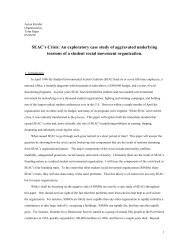
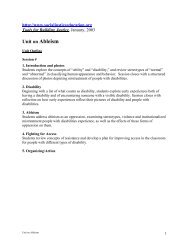

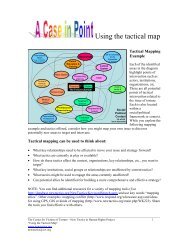
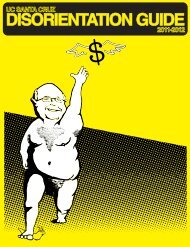

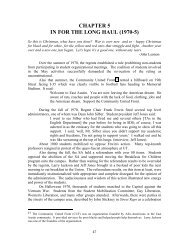
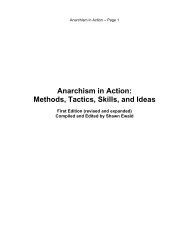

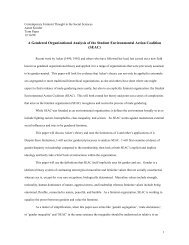



![Meaningful Student Involvement Research Guide [pdf] - SoundOut](https://img.yumpu.com/38822556/1/190x231/meaningful-student-involvement-research-guide-pdf-soundout.jpg?quality=85)